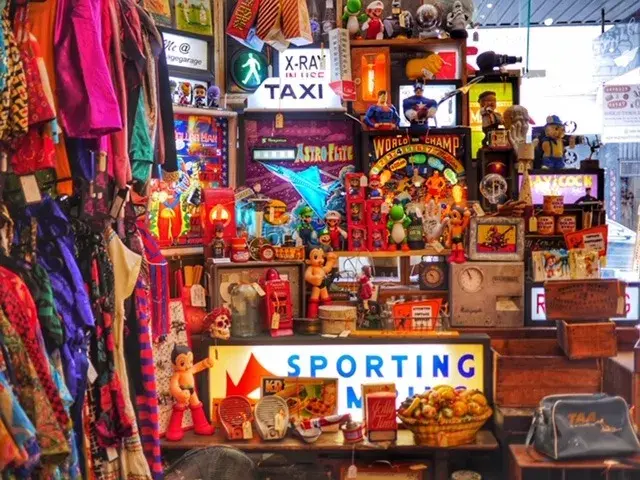The Rise in Popularity and Demand for Vintage Markets
- Nivi Watson

- Jul 9
- 3 min read
Updated: Oct 29
The renewed vigor for vintage markets is a testament to our ever-evolving fascination with the past, attracting an eclectic mix of shoppers from sustainability-minded millennials to interior design enthusiasts and antique collectors. Why does the charm of vintage markets persists despite the growth of e-commerce and fast-fashion? What draws people from all walks of life to these weekend bazaars? Most importantly, are vintage markets a whimsical flight of nostalgia or do they hint toward a more sustainable lifestyle model for our future?
At the heart of these questions lies the significance of vintage market, which serve not just as trading hubs, but also as social, economic, and environmental spaces. This piece examines the surge in popularity and demand for vintage market melbourne, underpinning it with various dimensions of changing perspectives, ethics, sustainability, and more.

The Appeal of Nostalgia
The rise of vintage markets might initially seem like a curious anomaly, a backlash perhaps to our tech-saturated lives. But in fact, they have been around for centuries, operating as physical portals to an era long passed. In present times, they offer consumers a break from the monotony of mass-produced items, harkening back to an era when craftsmanship reigned supreme. The "nostalgia factor"—the inherent emotional connection to the past—acts as a major pull for vintage market-goers.
Sustainability: A Key Driver
In an era where the growing urgency to live sustainably cannot be ignored, vintage markets have emerged as viable platforms that align with eco-friendly shopping practices. The "reuse and recycle" model on which these markets operate significantly reduces the carbon footprint associated with new production and waste generation. This gives an upper hand to vintage shopping over fast fashion, driving many consumers to consciously make more sustainable purchases.

Economic Impact of Vintage Markets
These markets are not just sustainability champions but are also pivotal in local economic stimulation. They provide opportunities for small scale businesses and artisans to thrive, fostering a sense of community and collective growth. Local economies benefit by attracting tourism, enhancing local profiles, and cultivating entrepreneurship.
The Uniqueness Quotient
Each vintage item carries a unique narrative attached to it. The story behind the items adds to their allure and value, which is starkly different from mass-produced goods. The blend of history, culture, craftsmanship, and design feeds the human craving for authentic and unique products, driving the popularity of vintage market melbourne.
The Social Experience
The communal experience offered by vintage markets is a defining aspect. Attending these markets is not merely a shopping trip, but a vibrant social outing. The interplay of music, food, conversation, and camaraderie often excites the weekend crowds.

Modern Marketing Techniques
The digitization of vintage markets has also played a considerable part in their rising popularity. By utilizing social media platforms to promote their goods, vintage markets have reached audiences far beyond their geographical boundaries, thus increasing their customer base and demand.
A Blast from the Past or a Vision for the Future?
Though it’s tempting to romanticize vintage markets as an escape into yesteryears, their resurgence signals a forward-thinking shift in our consumption patterns. As we become more aware of our ecological footprint and the value of community-driven economies, it seems that vintage markets – with their sustainable offerings and uniquely social experiences – are guiding us, quite stylishly, towards a better future.






Comments